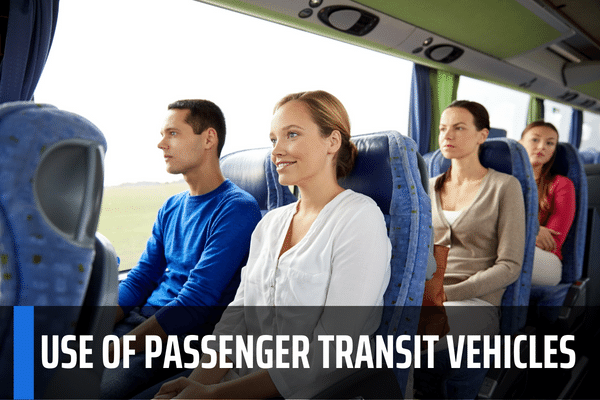Vietnam: Is it possible to use passenger transit vehicles to replace the coaches during the Tet Holiday 2023?
Vietnam: How many passengers can the coaches carry?
Pursuant to Clause 2, Article 23 of Decree 100/2019/ND-CP (added by point o, Clause 34, Article 2 of Decree 123/2021/ND-CP) stipulates as follows:
Penalties imposed upon operators of civil and commercial passenger automobiles, and similar automobiles violating road traffic regulations
....
2. A fine ranging from VND 400,000 to VND 600,000 shall be imposed upon the operator of a passenger vehicle (except for buses) for each passenger carried beyond the following permissible limits: 02 or more excess passengers on a 9 seater vehicle or smaller, 03 or more excess passengers on a 10 - 15 seater vehicle; 04 or more excess passengers on a 16 - 30 seater vehicle; 05 or more excess passengers on a vehicle with more than 30 seats, except for the violations mentioned in Clause 4 of this Article. Nevertheless, the total fine incurred by such operator shall not exceed VND 75,000,000.
According to the above regulations, the maximum number of passengers allowed by passenger vehicles is as follows:
- For passengers on 9 seater vehicles, 01 excess passenger.
- For passengers on 10 - 15 seater vehicles, 02 excess passengers.
- For passengers on 16 - 30 seater vehicles, 03 excess passengers.
- For passengers on vehicles with more than 30 seats, 04 excess passengers.

Vietnam: Is it possible to use passenger transit vehicles to replace the coaches during the Tet Holiday 2023?
Vietnam: If the coaches carrying passengers are overloaded during the Tet Holiday, can passenger transit vehicles be used instead?
Currently, there are no regulations on the concept of transit vehicles
However, according to the provisions of Clause 9, Article 3 of Decree 10/2020/ND-CP, the following provisions are made:
Passenger transport is a free-to-charge transport activity operated by enterprises or cooperatives engaged in the business of transporting passengers along fixed routes using passenger cars of 16 seats or less (including the driver) to pick up and drop off passengers traveling on fixed passenger transport routes of their unit to the bus station or passenger pick-up and drop-off stops of fixed routes in the locality at the two ends of the route.
Accordingly, it can be understood that a transit vehicle is a vehicle used in the "passenger transport" activity to pick up passengers to a bus station or drop off passengers at a fixed route of the station. At the same time, according to the above regulations, the transit vehicle must be a passenger car with a number of seats less than or equal to 16 seats
Pursuant to Clause 10, Article 26 of Circular 12/2020/TT-BGTVG stipulates as follows:
Rights and responsibilities of enterprises and cooperatives engaged in the business of passenger transport along fixed routes
...
10. Vehicles with the badge "TRANSFER VEHICLES" must not be used for transport business activities.
In addition, according to Point e, Clause 6, Article 28 of Decree 100/2019/ND-CP:
Penalties for violations of regulations on road transport, road transport support services
...
6. A fine of from VND 5,000,000 to VND 6,000,000 shall be imposed on individuals, from 10,000,000 VND to 12,000,000 VND for organizations providing transport business or transport support services that perform one of the following actions. the following violations:
...
e) Using transit vehicles carrying passengers in contravention of regulations;
Thus, when the number of passengers is overloaded on big occasions such as holidays and Tet Holiday, the coach operator is not allowed to use transit vehicles to carry passengers instead of coaches running on fixed routes. If violating, the transit driver may face a fine of from 5,000,000 to 6,000,000 VND, the garage will have to pay from 10,000,000 to 12,000,000 VND.
What are the legal regulations on the use of passenger transit vehicles in Vietnam?
Pursuant to Clause 1, Article 21 of Circular 12/2020/TT-BGTVG stipulates as follows:
Regulations on use of passenger transit vehicles
1. Passenger transit vehicles shall comply with Clause 9 Article 3, Clause 5 Article 4, Clause 1 Article 12 and Point a Clause 2 Article 22 of the Decree No. 10/2020/ND-CP; their service life shall be determined in accordance with regulations on service life of buses specified in the Government’s Decree 95/2009/ND-CP dated October 30, 2009.
Specifically, the conditions of passenger transit vehicles according to the above regulations are as follows:
- Being a passenger car with 16 seats or less (including the driver) to pick up and drop off passengers traveling on their own fixed passenger transport routes to the bus station or the pick-up and drop-off stops of the fixed route. determined in the locality at the two ends of the route;
- No charge;
- Must have a transit vehicle badge (valid for 07 years or at the request of the transport business unit (from 01 year to 07 years) and must not exceed the useful life of the vehicle);
- Vehicle badges are fixed on the right side of the inside front glass of the vehicle; must be fully posted on the vehicle;
- Must install cruise monitoring device;
- Post the name and phone number of the business or cooperative on the outside on either side of the car body or on the two sides of the car door with the minimum dimensions: length is 20 cm, width is 20 cm.
Thus, a vehicle that wants to be used as a passenger transport vehicle must meet all of the above conditions. In particular, the badges of transit vehicles are made according to the form specified in Appendix 5 issued together with Circular 12/2020/TT-BGTVG.
LawNet
